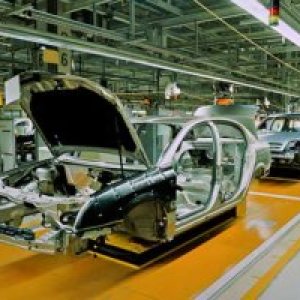EV Transition: A Historic Moment

STORY INLINE POST
Q: INA has forecasted an almost 7 percent increase in the production of auto parts in Mexico by the end of 2022. What factors are contributing to this positive scenario?
A: We closed 2019 with a production of over US$97 billion but closed 2020 with almost US$79 billion in production because the pandemic caused a 20 percent contraction in the automotive industry worldwide. However, we closed 2021 with a 20 percent increase in production compared to 2020. We forecast a 7.5 percent production increase by the end of 2022, for a total of almost US$102 billion. In 2023, we expect a production increase of 1.18 percent compared to 2022, which would be approximately US$103 billion and we aim to close 2024 with US$105 billion.
The entry into force of the USMCA has led North American companies to substitute Asian imports. The rules of origin, which impact the production of auto parts, increase the regional value content (RVC) from 62.5 percent to 75 percent. This not only affects light vehicles; RVC in heavy vehicles increased from 60 percent to 70 percent. There was also an increase in the RVC for auto parts, which rose from 60 percent to 75 percent for core parts, from 60 percent to 70 percent for main parts and from 60 percent to 65 percent for complementary parts.
Moreover, the US trade war with China has caused the former to have a trade deficit with the latter that exceeds US$600 billion. The conflict began with a trade expansion law during former US President Donald Trump’s terms but continues during the administration of President Joe Biden. The actions included imposing taxes of up to 25 percent. Owing to this, Chinese companies are settling in North America, specifically in Mexico, which is the most competitive country.
Q: What challenges could compromise Mexico’s position as the world’s fourth-largest auto parts producer?
A: The shortage of semiconductors, the rise in the cost of raw materials and the Ukraine war are affecting every country at the same level. Mexico’s fourth-place ranking is not being threatened because supply chain issues are affecting all countries equally. Germany, which is now the fifth-largest auto parts producer, will close 2022 with production valued at US$94 billion while we will close with production valued at US$102 billion. It will take Germany about eight years to reach our auto parts production levels.
Q: What factors have helped Nuevo Leon receive 33.3 percent of the Foreign Direct Investment for the auto parts market?
A: Its closeness with the US has made it attractive. Monterrey is close to a strategic region for all the production destined to the US and the EU. The local government has also supported the sector, for example through land donations or by forgiving the value added tax (VAT).
Q: Mexico has been a hub of manufacturing rather than design. What is needed to transform Mexico into a design hub for vehicle components?
A: Mexico performs auto parts design and R&D but it does not take part in vehicle design because this process takes place in the OEMs' countries of origin. Mexico has talent for vehicle design and many Mexicans are currently designing vehicles for OEMs abroad.
Q: What role can INA play in the global transition toward electromobility?
A: We are the main auto parts supplier for the US, as 36 percent of US auto parts imports come from Mexico. For over 25 years, we have supplied the US with auto parts and during the past 10 years, we have also supplied auto parts for EVs. We know the market. When Mexico produces more zero-emission vehicles, it will have to invest in adapting production lines. Our core business is the ICE auto parts market, followed by the zero-emissions segment. In the next 10 years, producing auto parts for EVs might be our main business. This shift is contemplated in the strategic plan of the auto parts industry.
Recently, President Andrés Manuel López Obrador presented a decalogue regarding the shift toward clean energies. Its third point says that by 2030, 50 percent of the manufactured vehicles in Mexico will be EVs but for this to happen, infrastructure and government support are needed. Mexico only has about 350 charging stations for EVs, while Holland has about 40,000. The country needs infrastructure and corridors for both light and heavy vehicles.
Consumer collaboration is also needed. Consumers must be conscious of their responsibility to decrease their carbon footprint but they also need access to efficient vehicles. Aside from fiscal incentives, clients need to enjoy greater benefits, such as free parking and toll-free driving.
Q: What other emerging trends is the auto parts market preparing for?
A: New players are entering the auto parts industry by manufacturing hardware and software. Vehicles are changing and, in the future, the main core part of a vehicle will be its hardware. The new players are going to be more relevant because vehicle maintenance will also include software updates. Cybersecurity is also required by new vehicles that are connected to the IoT.
People do not realize the importance of the historic moment that we are living in. This era is as important as when the first ICE vehicle was launched or even when the internet was created. Future generations are going to live in a world where only EVs circulate on the road and they are going to be told stories about the times when ICE vehicles existed.








 By Sofía Garduño | Journalist & Industry Analyst -
Fri, 07/01/2022 - 13:01
By Sofía Garduño | Journalist & Industry Analyst -
Fri, 07/01/2022 - 13:01
















